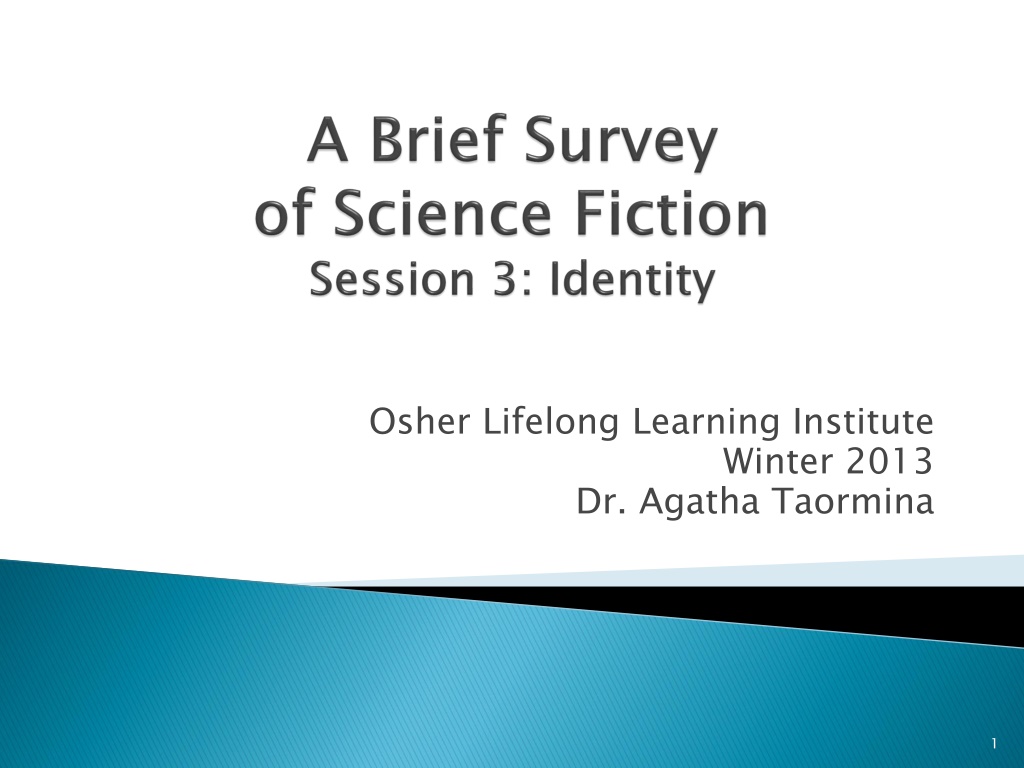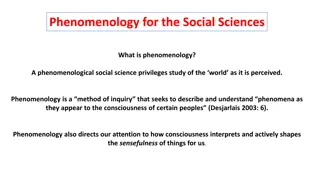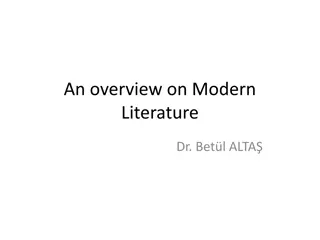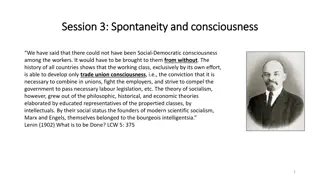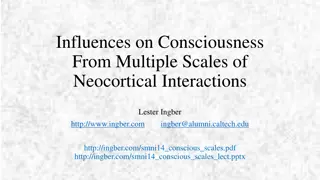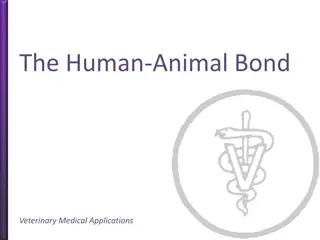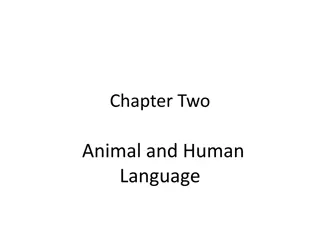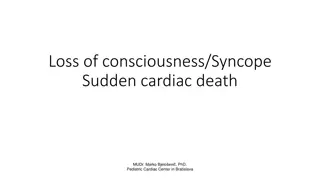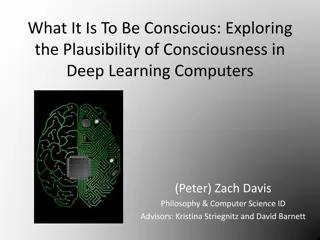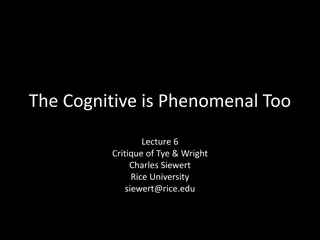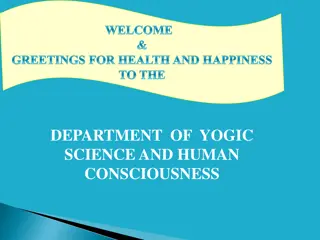Exploring Human and Animal Consciousness in the Modern Era
Delve into the intricacies of human and animal consciousness, examining topics such as sentience, medical interventions, transplants, cyborgs, genetics, and the presence of consciousness in non-human animals. Discover how advancements like transplants, prosthetics, and scientific conclusions challenge traditional notions of what it means to be "human".
Download Presentation

Please find below an Image/Link to download the presentation.
The content on the website is provided AS IS for your information and personal use only. It may not be sold, licensed, or shared on other websites without obtaining consent from the author. Download presentation by click this link. If you encounter any issues during the download, it is possible that the publisher has removed the file from their server.
E N D
Presentation Transcript
Osher Lifelong Learning Institute Winter 2013 Dr. Agatha Taormina 1
What does it mean to be human? Sentience Medical Interventions Transplants Prosthetics Cyborgs Genetics Mutations Cloning Artificial intelligence Computers Robots Androids
Consciousness, self-awareness Elements Desire Will Ethics Insight Perhaps emotion
Self-concept the mirror test Metacognition: the ability to monitor mental states Language
Arbitrariness Cultural transmission Discreteness Displacement Metalinguistics Productivity
Conclusions announced by a group of scientists at the Consciousness in Human and Nonhuman Animals conference in Cambridge (July 2012): Convergent evidence indicates that non-human animals have the neuroanatomical, neurochemical, and neurophysiological substrates of conscious states along with the capacity to exhibit intentional behaviors.
Indicates that humans are not unique in possessing the neurological substrates that generate consciousness. Non-human animals, including all mammals and birds, and many other creatures, including octopuses, also possess these neurological substrates
Animal consciousness Planet of the Apes Shared consciousness Dr. Jekyll and Mr. Hyde The Incredible Hulk The Trill from Star Trek Tok ra and Gou uld from Stargate SG-1
Transplants Cornea 1905 Kidney transplant between identical twins 1954 Heart 1967 Hand 1998 Partial face 2005 Double arm 2008 Full facial 2010 Double leg 2011 Examples Spock s Brain Coma Prosthetics: The Six Million Dollar Man
cyborg human with mechanical parts the word itself is a contraction of the term "cyb Major issue is the ratio of human to mechanical parts Examples Daleks and Cybermen from Doctor Who RoboCop Iron Man The Borg from Star Trek cyborg: a machine/human hybrid, i.e., a cybernetic org organism."
In vitro fertilization Louise Brown, the first test tube baby, born in 1978 Screen embryos for some genetic markers Designer babies
Mutations Spider-Man Heroes The X-Men Genetic Engineering Frankenstein The Island of Doctor Moreau
Plants and higher mammals have been successfully cloned Dolly the sheep cloned in 1997 Scientists, philosophers, and politicians debate the ethics of cloning a human being. Example: Jurassic Park
The paradigm for science fiction's presentation of artificial intelligence revolves around several central fears: Fear that artificial intelligence will take over Fear of mechanization--humans will be reduced to machines Fear of humans remaining organic but finding themselves trapped in machines
Computer Robot Android
A machine intelligence; an artificial brain Has no mobility In science fiction a computer with sufficient memory approaches sentience
The Turing Test (1950) ELIZA (1966) PARRY (1972) Chatterbots Chinese Room argument (1980)
Deep Blue beats reigning world chess champion Gary Kasparov, 1997 Watson defeats Brad Rutter and Ken Jennings at Jeopardy, 2011
Roomba Lego robot Asimo
Golem is an animated being that looks like a man and is fashioned from inanimate matter Word means unshaped form in Hebrew Generally inscribed with a word or mark that animates it; erase the mark and the golem falls lifeless
Classic origin narrative Golem created by Judah Loew ben Bezalel, the chief Rabbi of Prague in late 16th century in response to a pogrom of the Holy Roman Emperor Rudolf II Golems are generally depicted as mindless and unable to speak
A mechanical man the word comes from a Czech word meaning "servitude" or "work" first appeared in Karel Capek's play R.U.R (Rossum's Universal Robots) in 1921 R.U.R.
The laws of robotics are an attempt to counteract the fear of artificial intelligence by building safeguards into such machines.
Isaac Asimov creating these laws and writing a series of short stories (collected in I, Robot application of the laws. First formally propounded in Runaround (1942) Require a robot/android to have a positronic brain Isaac Asimov is generally credited with I, Robot) about the positronic brain
First Law being, or, through inaction, allow a human being to come to harm. Second Law given it by human beings except where such orders conflict with the First Law. Third Law as long as such protection does not conflict with the First or Second Law. First Law: A robot may not injure a human Second Law: A robot must obey the orders Third Law: A robot must protect its existence
Asimov added a fourth, or Zeroth, Law in Robots and Empire Zeroth or, through inaction, allow humanity to come to harm. First Law, revised human being or, through inaction, allow a human being to come to harm except where such orders conflict with the Zeroth Law. Robots and Empire (1985): Zeroth Law Law: A robot may not injure humanity First Law, revised: A robot may not injure a
android the term means "man-like" unlike robots, androids generally appear virtually indistinguishable from humans Examples Data from Star Trek: the Next Generation The Terminator The replicants from Blade Runner android: an artificial human
Shape-shifters like Odo from Star Trek: Deep Space Nine Holograms like the doctor from Star Trek:Voyager
Animal Consciousness Planet of the Apes (1963) by Pierre Boulle Uplift Universe series by David Brin Startide Rising (1983) Medical Intervention Flowers for Algernon (1959) by Daniel Keyes The Speed of Dark (2003) by Elizabeth Moon Cyborgs The Ship Who Sang (1969) by Anne McCaffrey Cyborg (1972) by Martin Caidin Man Plus (1976) by Frederik Pohl
Experimentation Frankenstein (1818) by Mary Shelley The Island of Doctor Moreau (1896) by H.G. Wells The Invisible Man (1897) by H. G. Wells Cloning The Boys from Brazil (1976) by Ira Levin Where Late the Sweet Birds Sang (1976) by Kate Wilhelm Jurassic Park (1990) by Michael Crichton
Computers The Machine Stops (1909) by E. M. Forster The Moon is a Harsh Mistress (1966) by Robert Heinlein 2001: A Space Odyssey (1968) by Arthur C. Clarke Robots I, Robot (1950) by Isaac Asimov With Folded Hands (1947) by Jack Williamson
Androids The Caves of Steel (1954) and The Naked Sun (1957) by Isaac Asimov The Bicentennial Man (1976) by Isaac Asimov
Perception Virtual Reality Time Travel Parallel Universes Alternate History
